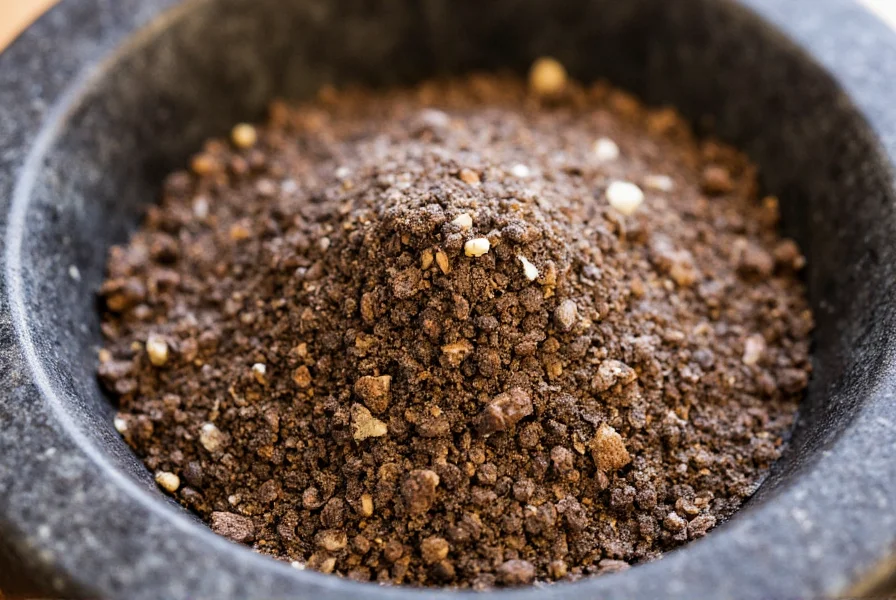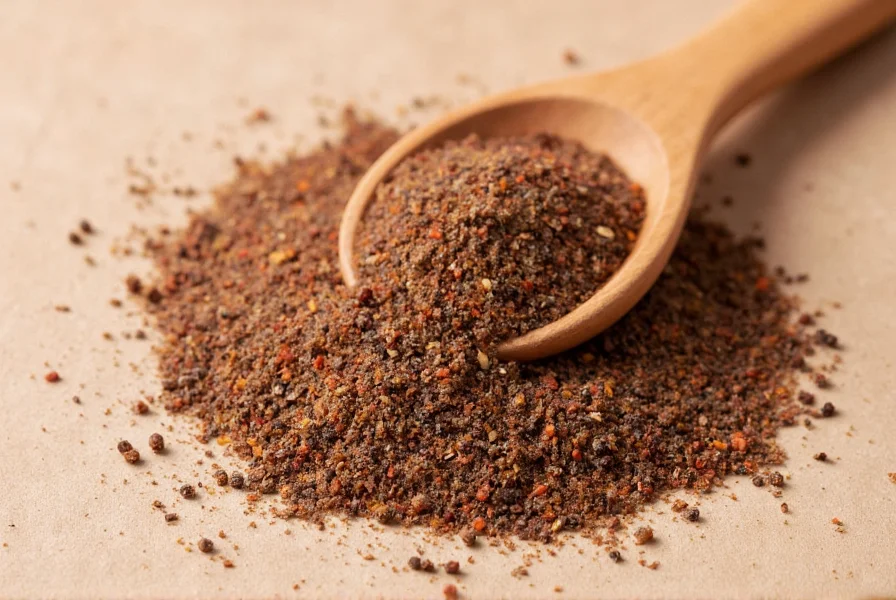Understanding the proper use of pepper salt can transform your cooking experience. This versatile seasoning blend eliminates the need for separate shakers while ensuring consistent flavor distribution. Unlike individual seasonings, pepper salt creates a harmonious balance that enhances rather than overwhelms dishes. Professional chefs often prefer freshly ground pepper salt blends for their superior aroma and flavor release compared to pre-packaged alternatives.
What Exactly Is Pepper Salt?
Pepper salt represents one of the most fundamental seasoning combinations in culinary traditions worldwide. This simple yet powerful blend typically consists of 1 part freshly ground black pepper to 3-4 parts fine sea salt, though ratios vary based on regional preferences and specific culinary applications. The magic happens when these two ingredients work synergistically—the piperine in pepper actually enhances our perception of saltiness, allowing for potentially reduced sodium content while maintaining robust flavor.
Unlike table salt alone, pepper salt introduces complexity through the volatile oils released when peppercorns are ground. These aromatic compounds dissipate quickly, which explains why freshly prepared pepper salt blends deliver noticeably superior flavor compared to commercial pre-mixed versions that often lose potency during storage.
Types of Pepper Salt Blends
Culinary traditions have developed numerous variations of this essential seasoning. Understanding these differences helps home cooks select or create the perfect blend for specific dishes:
| Blend Type | Pepper-to-Salt Ratio | Best Culinary Applications |
|---|---|---|
| Standard Table Blend | 1:3 | Everyday cooking, roasted vegetables, grilled meats |
| Fine Dining Blend | 1:4 | Delicate fish, egg dishes, finishing sauces |
| Steakhouse Blend | 1:2 | Steaks, burgers, hearty roasts |
| Mediterranean Blend | 1:3 with lemon zest | Seafood, grilled chicken, vegetable medleys |
Creating Your Own Superior Pepper Salt
Commercial pepper salt often contains anti-caking agents and loses freshness during storage. For optimal flavor, prepare small batches using these professional techniques:
Start with high-quality ingredients—Himalayan pink salt or fine sea salt works best due to their clean flavor profile and consistent crystal size. For pepper, select Tellicherry or Lampong peppercorns known for their complex flavor notes. The grinding process significantly impacts results: coarsely ground pepper creates bursts of flavor, while fine grinding produces more uniform seasoning.

Follow this simple method for restaurant-quality results:
- Measure 3 tablespoons of fine sea salt
- Add 1 tablespoon whole black peppercorns
- Grind together in a mortar using a circular motion until uniformly mixed
- Store in an airtight container away from light and moisture
This small-batch approach ensures maximum flavor retention. Unlike pre-ground commercial blends that lose 70% of their aromatic compounds within weeks, homemade pepper salt maintains peak freshness for 2-3 weeks when properly stored.
When to Choose Pepper Salt Over Individual Seasonings
Understanding the appropriate applications for pepper salt versus separate seasonings represents a crucial culinary decision. Pepper salt shines in situations requiring consistent, balanced seasoning without overpowering individual elements.
Use pepper salt when:
- Seasoning proteins before cooking (creates even flavor distribution)
- Preparing dishes where precise salt-to-pepper ratio matters (like béchamel sauce)
- Working with large quantities where consistent seasoning is challenging
- Seeking convenience without sacrificing flavor balance
Opt for separate seasonings when:
- Creating layered seasoning effects (salt early, pepper later)
- Working with delicate dishes requiring precise control
- Accommodating individual taste preferences at the table
- Using specialty salts that pair better with specific pepper varieties

Common Pepper Salt Mistakes to Avoid
Even this simple seasoning blend presents pitfalls that can compromise your dishes. Many home cooks unknowingly commit these errors:
Over-reliance on pre-ground commercial blends - These often contain anti-caking agents and lose volatile flavor compounds during storage. The difference between fresh and stale pepper salt is comparable to fresh-squeezed versus bottled lemon juice.
Incorrect ratios for specific applications - Using a standard 1:3 blend on delicate fish creates overpowering heat. Adjust ratios based on dish requirements—delicate items need more salt-forward blends (1:4), while robust meats benefit from pepper-forward mixes (1:2).
Poor storage practices - Exposure to light, air, and moisture rapidly degrades quality. Store in small, opaque containers with minimal headspace, and never keep near the stove where heat accelerates flavor loss.
Professional Tips for Maximizing Flavor Impact
Chefs employ several advanced techniques to extract maximum flavor from pepper salt blends:
For meats, apply pepper salt at least 40 minutes before cooking to allow salt penetration without drawing out moisture. When seasoning soups or sauces, add pepper salt in two stages—half during cooking to build flavor foundation, half at the end to preserve volatile aromatic compounds.
Consider toasting whole peppercorns before grinding to enhance their floral notes, particularly effective with Tellicherry peppercorns. For special occasions, create custom blends incorporating regional salts like French sel gris with specific pepper varieties for distinctive flavor profiles.
Frequently Asked Questions
What is the ideal ratio for homemade pepper salt blend?
The standard professional ratio is 1 part freshly ground black pepper to 3-4 parts fine sea salt. For robust dishes like steaks, use a 1:2 ratio. For delicate preparations like fish or egg dishes, increase to 1:4. Always adjust based on personal preference and specific recipe requirements.
Does pepper salt have a shorter shelf life than regular salt?
Yes, pepper salt has a significantly shorter shelf life than pure salt due to the volatile compounds in ground pepper. Commercial blends typically maintain peak quality for 3-6 months, while homemade versions last 2-3 weeks when stored properly in an airtight container away from light and heat. The flavor degrades noticeably as the aromatic compounds evaporate.
Can I use different types of salt in my pepper salt blend?
Absolutely. Different salts create distinctive flavor profiles. Sea salt provides clean salinity, Himalayan pink salt adds subtle mineral notes, and smoked salts introduce complexity. Match the salt type to your intended use—fine sea salt works best for general purpose blends, while specialty salts shine in specific applications like smoked salt for barbecue rubs.
Why does my homemade pepper salt become clumpy?
Clumping occurs when moisture enters the container. To prevent this, ensure your salt and pepper are completely dry before mixing, use airtight containers, and consider adding a few grains of uncooked rice to absorb excess moisture. Avoid storing near heat sources like stoves, as temperature fluctuations cause condensation inside the container.
Is pepper salt suitable for all types of cuisine?
While versatile, pepper salt works best in Western and many fusion cuisines. Some traditional Asian dishes rely on separate seasoning applications for specific flavor layering. Mediterranean cooking often benefits from lemon-infused pepper salt, while Latin American cuisine might prefer blends incorporating smoked peppers. Always consider the culinary tradition when deciding whether to use pre-mixed or separate seasonings.











 浙公网安备
33010002000092号
浙公网安备
33010002000092号 浙B2-20120091-4
浙B2-20120091-4